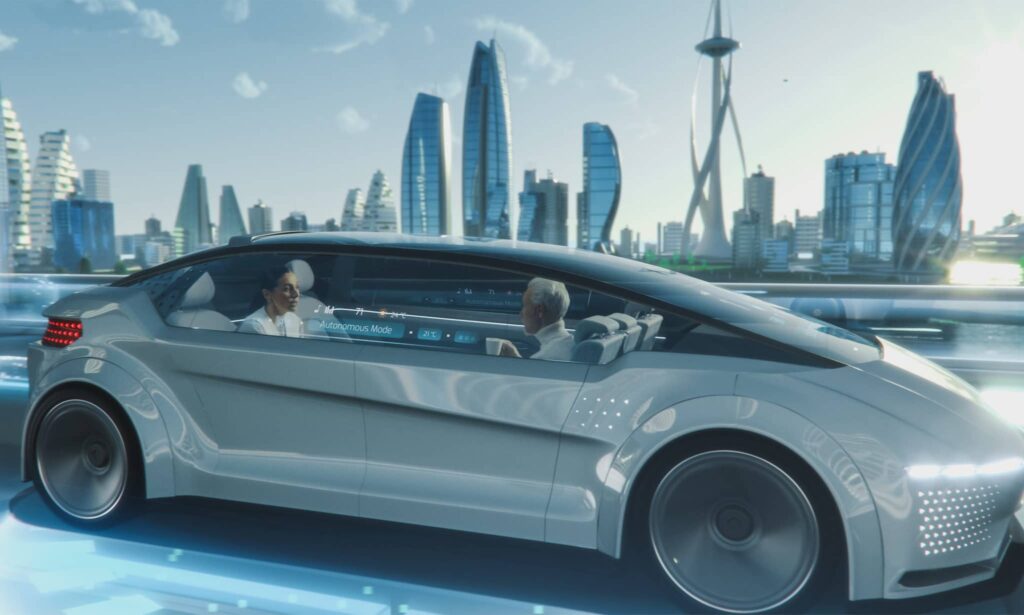As we stand on the brink of a technological revolution, the question of whether autonomous vehicles are the future of transportation looms large. Self-driving cars, equipped with advanced sensors and artificial intelligence, promise to transform our roads and redefine mobility. With the potential to enhance safety, reduce traffic congestion, and provide greater accessibility, the allure of autonomous vehicles is undeniable. But what does this mean for our daily lives and the future of urban planning?
In this article, we will delve into the fascinating world of autonomous vehicles, exploring the cutting-edge technologies that power self-driving cars and the various levels of automation currently in development. We will also examine the numerous benefits these vehicles offer, from decreased accident rates to environmental sustainability. However, the journey to widespread adoption is not without its challenges, including regulatory hurdles and public perception. Join us as we navigate through these critical topics and uncover what the future holds for autonomous vehicles.
Whether you are a tech enthusiast, a commuter, or simply curious about the evolution of transportation, this article will provide valuable insights into the implications of self-driving cars. Stay with us as we explore the potential impact of autonomous vehicles on society, the economy, and our everyday lives. The future of driving is here, and it’s time to discover what it means for you!
The Technology Behind Self-Driving Cars
Self-driving cars utilize a combination of advanced technologies, including artificial intelligence (AI), machine learning, and sensor systems. These vehicles are equipped with cameras, radar, and lidar to perceive their surroundings, allowing them to navigate complex environments. The AI algorithms process the data collected from these sensors to make real-time decisions, such as when to stop, accelerate, or change lanes.
As the technology continues to evolve, the accuracy and reliability of self-driving systems improve. Companies like Waymo and Tesla are at the forefront of this innovation, constantly refining their algorithms to enhance safety and efficiency. The integration of V2X (Vehicle-to-Everything) communication is also a significant development, enabling vehicles to communicate with each other and infrastructure, further enhancing situational awareness.
Safety and Regulatory Challenges
One of the primary concerns surrounding autonomous vehicles is safety. While self-driving cars have the potential to reduce accidents caused by human error, they also face unique challenges. Incidents involving autonomous vehicles can lead to public skepticism and regulatory scrutiny. Ensuring that these vehicles can operate safely in diverse conditions is crucial for widespread adoption.
Regulatory frameworks are still being developed to address the complexities of self-driving technology. Governments around the world are working to establish guidelines that ensure safety while fostering innovation. The balance between regulation and technological advancement will play a critical role in determining the future of autonomous vehicles.
Economic Implications of Autonomous Vehicles
The introduction of self-driving cars could have profound economic implications. On one hand, they promise to reduce transportation costs and increase efficiency. On the other hand, the widespread adoption of autonomous vehicles may disrupt traditional industries, such as trucking and taxi services, leading to job displacement.
As companies invest in autonomous technology, new business models are emerging. Ride-sharing services may evolve to incorporate fleets of self-driving cars, potentially transforming urban mobility. Understanding the economic landscape will be essential for policymakers and businesses as they navigate this transition.
Environmental Impact of Self-Driving Cars
Autonomous vehicles have the potential to contribute to environmental sustainability. By optimizing driving patterns and reducing traffic congestion, self-driving cars can lower fuel consumption and emissions. Additionally, the integration of electric vehicles into autonomous fleets can further enhance their environmental benefits.
However, the overall impact on the environment will depend on various factors, including the energy sources used to power these vehicles and the urban planning strategies adopted alongside their implementation. A comprehensive approach is necessary to maximize the positive environmental effects of autonomous vehicles.
Public Perception and Acceptance
Public perception plays a crucial role in the adoption of self-driving cars. While many people are excited about the potential benefits, concerns about safety, privacy, and the loss of control can hinder acceptance. Education and transparency are vital in addressing these concerns and building trust in autonomous technology.
Surveys indicate that younger generations are more open to embracing self-driving cars, while older individuals may be more hesitant. Engaging with communities and providing clear information about the safety and benefits of autonomous vehicles can help bridge the gap in public perception.
The Future of Urban Mobility
The rise of autonomous vehicles is poised to reshape urban mobility. As cities become more congested, self-driving cars could offer solutions to improve transportation efficiency. The integration of autonomous vehicles into public transit systems may enhance accessibility and reduce reliance on personal vehicles.
Moreover, the potential for shared autonomous vehicles could lead to a decrease in the number of cars on the road, contributing to less traffic and lower emissions. Urban planners and policymakers must consider these developments to create sustainable and efficient transportation systems for the future.
| Aspect | Description |
|---|---|
| Definition | Autonomous vehicles, or self-driving cars, are vehicles equipped with technology that allows them to navigate and drive without human intervention. |
| Technology | Self-driving cars utilize a combination of sensors, cameras, artificial intelligence, and machine learning to interpret their surroundings and make driving decisions. |
| Levels of Automation | The Society of Automotive Engineers (SAE) defines six levels of automation, ranging from Level 0 (no automation) to Level 5 (full automation). |
| Benefits | Potential benefits include reduced traffic accidents, increased mobility for the elderly and disabled, decreased traffic congestion, and lower transportation costs. |
| Challenges | Challenges include technological limitations, regulatory hurdles, ethical considerations, and public acceptance. |
| Current Status | Many companies, including Tesla, Waymo, and Uber, are actively testing and developing autonomous vehicle technology, with varying degrees of success. |
| Future Outlook | While self-driving cars hold great promise, widespread adoption may take years due to the need for further technological advancements and regulatory frameworks. |



